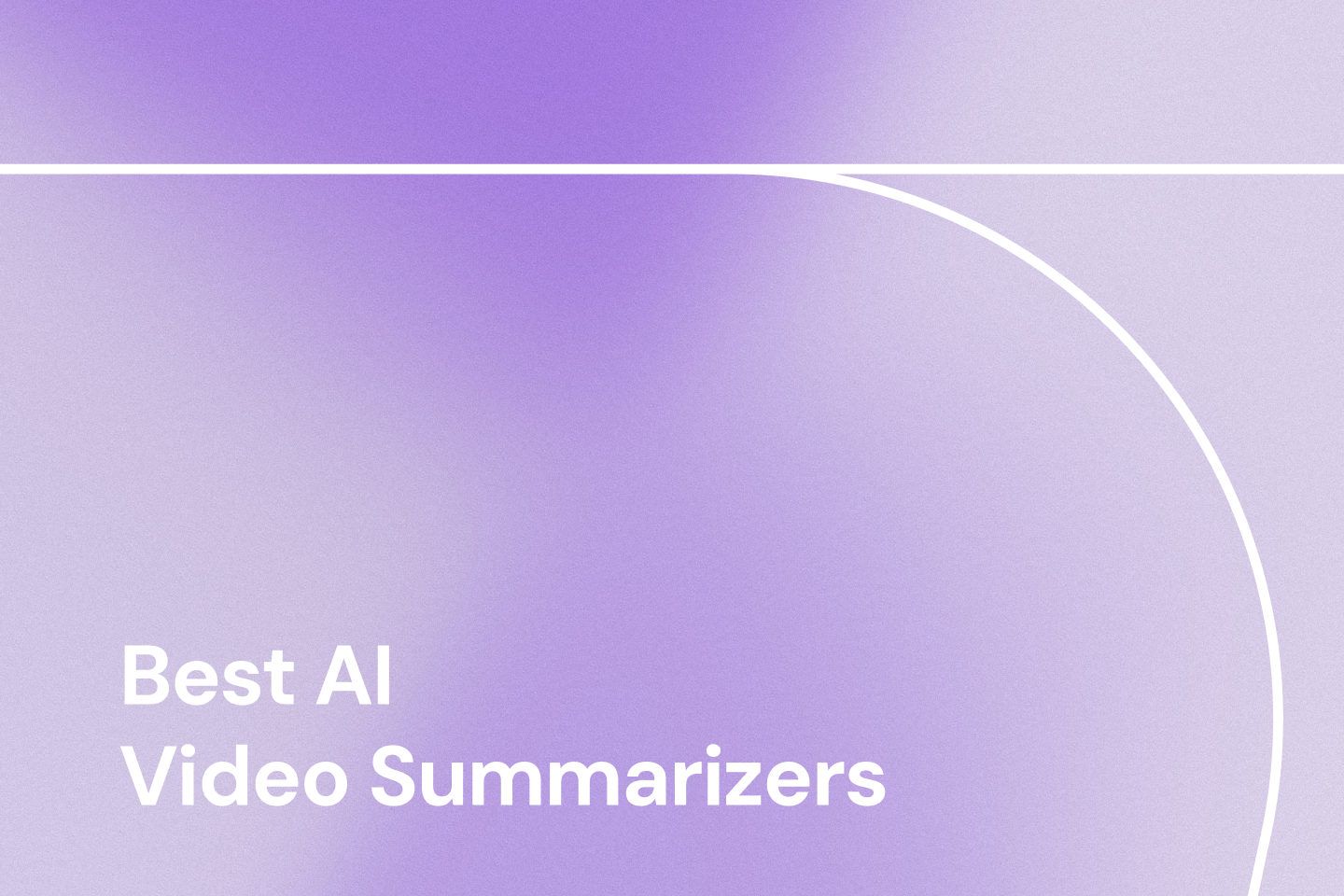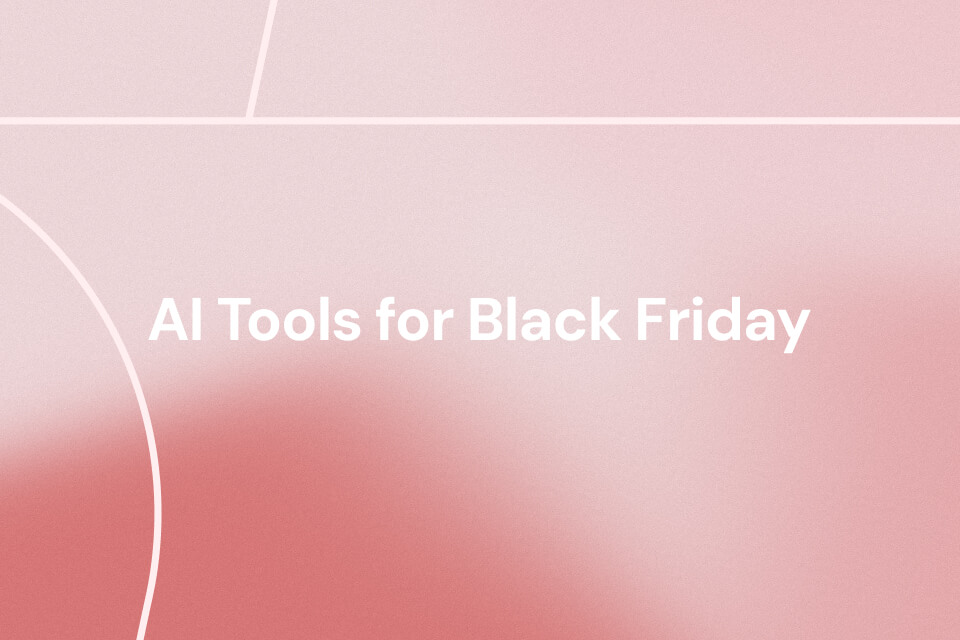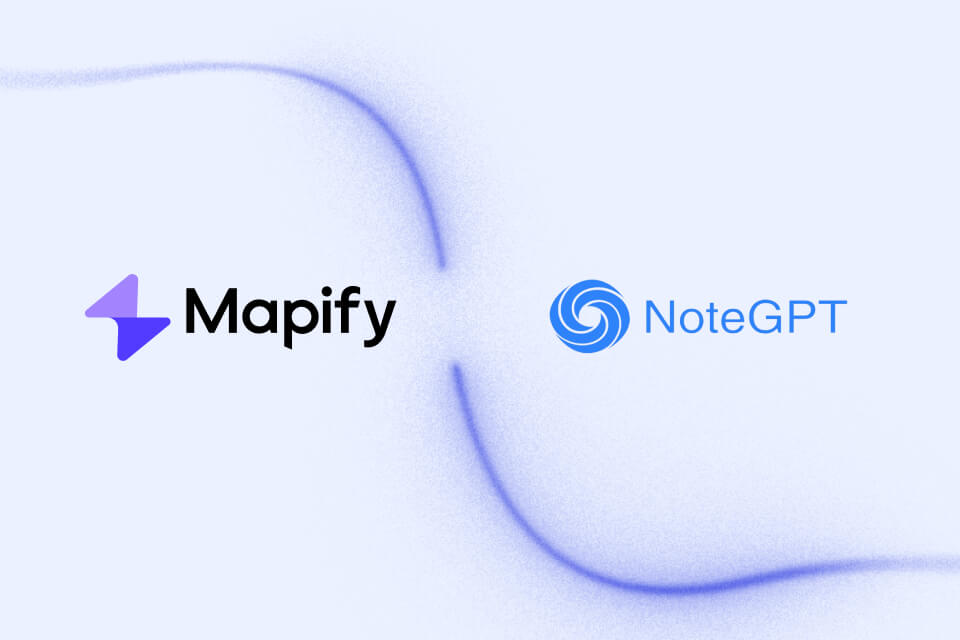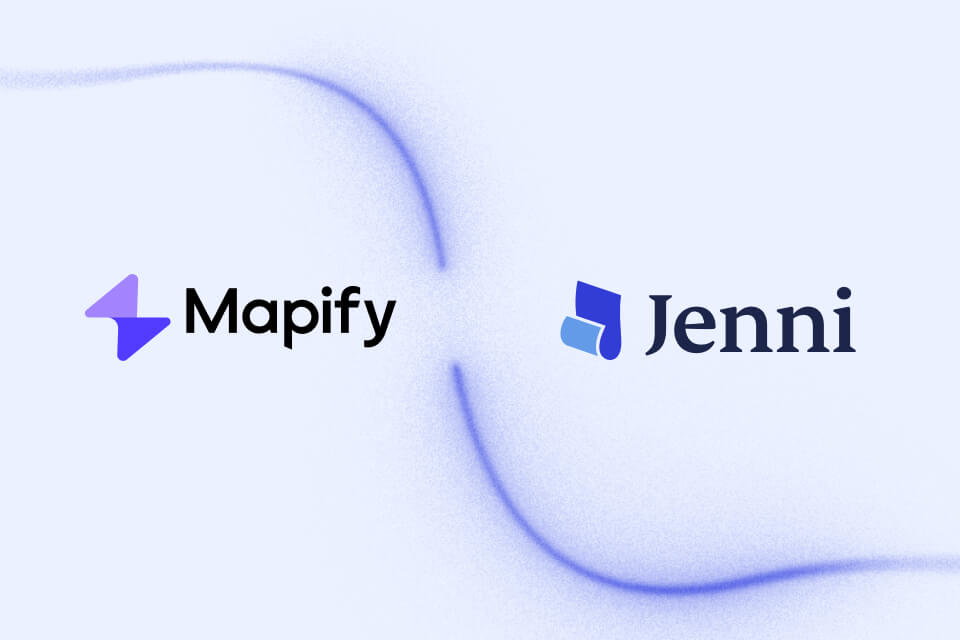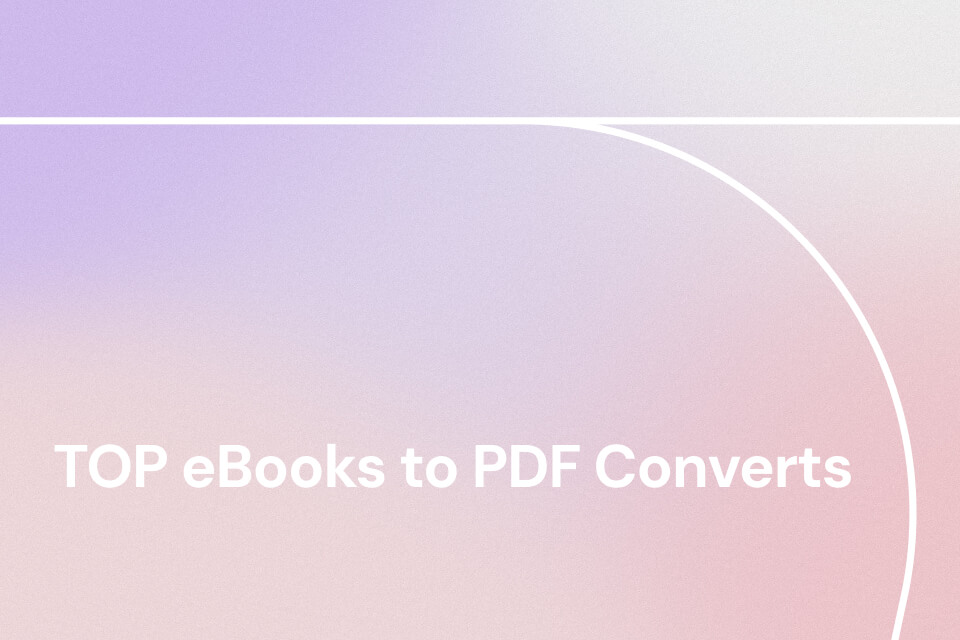Why the Nobel Prizes Still Matter in 2025
Every October, the Nobel Prizes spotlight the achievements that define our era. They remind us that ideas — not just technology — are the true engines of progress. From quantum physics to global health, from literature to economics, each prize celebrates decades of human curiosity, persistence, and imagination.
But there’s a modern paradox: we live in an age of abundance, not scarcity, of information. Every year, hundreds of articles and analyses flood the internet within hours of the announcements. And yet, most people still struggle to understand the bigger picture. How are these discoveries related? What’s the storyline of human knowledge that links them all?
That’s where visual thinking comes in. By turning abstract data into a visual structure, we can see relationships that are invisible in text form.
For this year’s Nobel season, we used Mapify, our AI-powered knowledge visualization platform, to create a 2025 Nobel Prize Mind Map — a visual snapshot of the year’s greatest discoveries and their shared patterns.
The 2025 Nobel Prize Winners at a Glance
The Nobel Committees for 2025 once again recognized discoveries that shape science, society, and culture. While every laureate has a unique story, visualizing them side by side reveals something deeper: a connected map of human progress.
Here’s a quick overview:
- 🧬 Physiology or Medicine – honored Mary E. Brunkow, Fred Ramsdell, and Shimon Sakaguchi for advancing our understanding of cellular repair mechanisms, opening new frontiers in regenerative medicine.
- ⚛️ Physics – celebrated John Clarke, Michel H. Devoret, and John M. Martinis for breakthroughs in quantum materials that enable next-generation computing.
- 🧪 Chemistry – recognized Susumu Kitagawa, Richard Robson, and Omar M. Yaghi for pioneering sustainable molecular synthesis and green chemistry.
- ✍️ Literature – awarded to László Krasznahorkai, whose work explores cultural identity and digital transformation in the modern world.
- 🕊️ Peace Prize – given to María Corina Machado for their leadership in cross-border collaboration and peacebuilding efforts.
Explore the 2025 Nobel Prize Mind Map created with Mapify — a visual journey across disciplines, discoveries, and the people behind them.

Share the mind map of the 2025 Nobel Prize from this link: https://mapify.so/share-link/gDfJKyJnuv
Seeing the Big Picture: How Ideas Interconnect
When you step back and look at the 2025 Nobel Map as a whole, several fascinating connections emerge:
🔹 1. AI is becoming the universal bridge
Machine learning and artificial intelligence appear across almost every field — from modeling molecular behavior to analyzing social systems. It’s no longer a single-discipline phenomenon; it’s the connective tissue of modern science.
🔹 2. Sustainability takes center stage
From green chemistry to environmental economics, climate-focused research is a visible hub in this year’s network. The world’s scientific priorities are clearly aligning toward sustainability — not as a trend, but as an organizing principle.
🔹 3. Collaboration over isolation
More laureates now share the stage than ever before. The map visually demonstrates how research is moving away from “lone genius” narratives toward collective intelligence — teams, labs, and cross-continental partnerships.
🔹 4. Literature and Peace as mirrors of science
Even outside STEM, the literature and peace prizes reflect the same forces shaping science — digital identity, ethics, and globalization. Visualizing them together reveals the cultural dimension of scientific discovery: innovation and empathy are two sides of the same coin.
This cross-disciplinary lens is exactly what visualization enables. Instead of reading fragmented stories, you see the network of knowledge — how discovery in one field sparks progress in another.
What Mapify Reveals That Text Cannot
Traditional media reports focus on what was awarded. Visualization answers a deeper question: how are these ideas related?
When we built the 2025 Nobel Prize mind map in Mapify, we noticed patterns that would have been impossible to spot by skimming articles:
- Topics like AI ethics, climate adaptation, and data science connect laureates across three different disciplines.
- Several discoveries trace back to shared historical roots — research from the 1990s and early 2000s that laid the groundwork for 2025’s breakthroughs.
- The map’s central clusters align almost perfectly with the world’s biggest challenges: energy, health, equity, and knowledge access.
This is the real power of visualization — it transforms complexity into clarity.
Mapify’s AI engine helped structure dozens of scattered summaries into a clean hierarchy: categories → laureates → concepts → related fields. It’s like transforming raw text into a living network of ideas.
Why Visualization Matters for Knowledge and Research
Visualizing information isn’t just about aesthetics. It’s cognitive engineering. Research in information design shows that humans process relationships better when they’re seen, not told.
For students, scientists, and creators, visualization is a superpower:
- Comprehension: You absorb complex data faster when it’s structured visually.
- Memory: Visual maps create spatial anchors, helping you remember relationships, not just facts.
- Discovery: Seeing gaps and clusters sparks new insights — the foundation of innovation.
With Mapify, you can apply the same principles used in this Nobel analysis to anything you’re researching: from AI ethics frameworks to startup ecosystems, from historical timelines to academic literature.
You don’t just collect knowledge — you connect it.
How to Summarize Your Own Mind Map of the Nobel Prize
How Mapify Works Behind the Scenes
Mapify combines the simplicity of a visual workspace with the intelligence of AI models — helping you map ideas in seconds. Here’s how it works:
- Input your content. Paste text, upload a link, or import notes.
- Mapify analyzes it. AI extracts key concepts, topics, and relationships.
- Generate your map. A structured, editable visualization appears — fully interactive.
- Refine & expand. You can drag nodes, merge ideas, and add your own insights.
Steps to Create Your Own Nobel-Style Knowledge Map
Inspired by this visualization? You can build your own. Here are many ways you can create your own mind maps with Mapify. Open the official website and create a free account, then you can start with the Ask Anything section or the Webpage section.
Instantly turn your content into mind maps with AI
Get Started Now- Ask Anything: Tell Mapify what you want, and open the web search mode. Click Mapidy and wait for**** the mind map to be generated.
- Webpage: Paste the official web page URL of the 2025 Nobel Prize, and click Mapify to summarize the winners as a mind map.
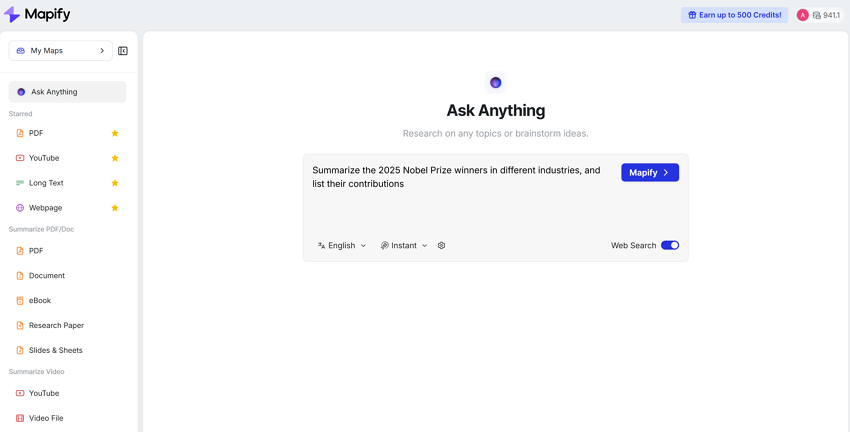
You can choose the language, mode, and make changes to the generated contents or styles as you like. Finally, share it with your friends or on social media using the link.
There are also many other ways you can generate a mind map with Mapify, such as summarizing from a YouTube video.
Final Thoughts: The Shape of Knowledge
Each Nobel Prize represents a single breakthrough, but together, they form a map of humanity’s collective intelligence.
The 2025 Nobel Prize visualization shows that innovation doesn’t happen in silos — it’s an ecosystem. By visualizing it, we reveal the invisible threads that connect discovery, creativity, and collaboration.
That’s the mission behind Mapify: to help people see ideas, understand them faster, and make better connections. Because when you can see knowledge, you can shape it.

